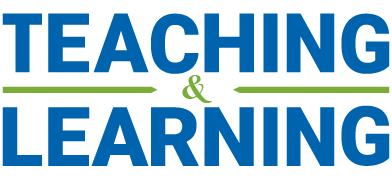Assessment
Tips & Considerations
- Consider breaking assessments (such as reports, written analyses, presentations, etc.) down into smaller steps that require students to submit their work in a succession of deadlines. These check-in points can help keep students on track as well as help you the instructor get a sense of student progress and their understanding of assignment contents and requirements. Remember that students may find it harder to stay on track or they may be more reluctant to ask questions about assessments (or any course component) in an online environment than they would in a face-to-face course.
- Design assessment deadlines to take into account the many priorities that students are dealing with during the pandemic, both at school and at home. Where possible, offer wide windows for completion of assignments to ensure students have adequate time to balance their many priorities.
- Limit dependence on technology for completing assessments, particularly those that you and your students are not yet comfortable with or equipped for.
- Timed, closed-book exams that require technology such as remote proctoring tools to prevent academic honesty infractions should be used a last resort. Although remote proctoring technology (e.g., Respondus Lockdown Browser & Monitor) can seem like a great tool that allows instructors to simply shift their in-person closed-book exams online while maintaining their academic integrity, it does have its drawbacks. These can range from student equipment requirements, to unstable internet connections, to privacy concerns. If one student experiences technical issues or has a broken webcam, this can create a complicated situation for the instructor, often involving the need for multiple make-up exams or alternative assessment formats, which then have implications for fairness and academic integrity. Instructors should avoid having some students write an online exam while others are assessed in an alternate format.
- Consider turning the closed-book exams into an open-book format and avoid the complications altogether. Read more about the benefits of open-book exams.
- Make use of TurnItIn, an academic integrity support tool that flags content in student submissions that is similar to content in TurnItIn’s database. Learn more about promoting academic integrity using TurnItIn.
- Canvas’ online assignment submission feature makes paper management between students and instructors more efficient. Students can submit assignments directly to Canvas. Instructors can easily message students with outstanding submissions. All submissions are time-stamped and can either be downloaded or marked directly in Canvas using Speedgrader.
- Canvas Quizzes allow instructors to deliver polls, surveys and assessments via their Canvas course. Quizzes can be used for quick understanding checks, to provide students an opportunity to practice concepts they’ve recently learned to determine where further study is needed, and to deliver graded, summative assessments.
- Some assessments lend themselves to a variety of submission formats (e.g., audio or video submissions rather than text), allowing students to make use of their creativity and often resulting in more engagement. However, if multiple submission formats are used, it’s important to keep the assignment requirements and assessment criteria the same across the various formats.
- Work with other instructors in your program to coordinate assessments where possible to avoid overloading students during peak assessments periods throughout the term.
- Consider making use of alternative assessment formats to the typical test or exam, such as:
-
- Summaries of specific course content with application to real-life cases
- Annotated bibliography of relevant journal articles
- Creative reflection assignment
- Digital storytelling or digital publishing assignment
- Recorded or live presentations via Zoom
- Recorded demonstrations of procedural knowledge or a performance task
-
- A portfolio collection representing work done throughout the term
- Primary-source analysis or article critique
- Infographic, video, audio recording, graphic text, or other multimedia project demonstrating mastery of the term’s work
- Dynamic multiple-choice exams built on platforms provided by textbook publishers


